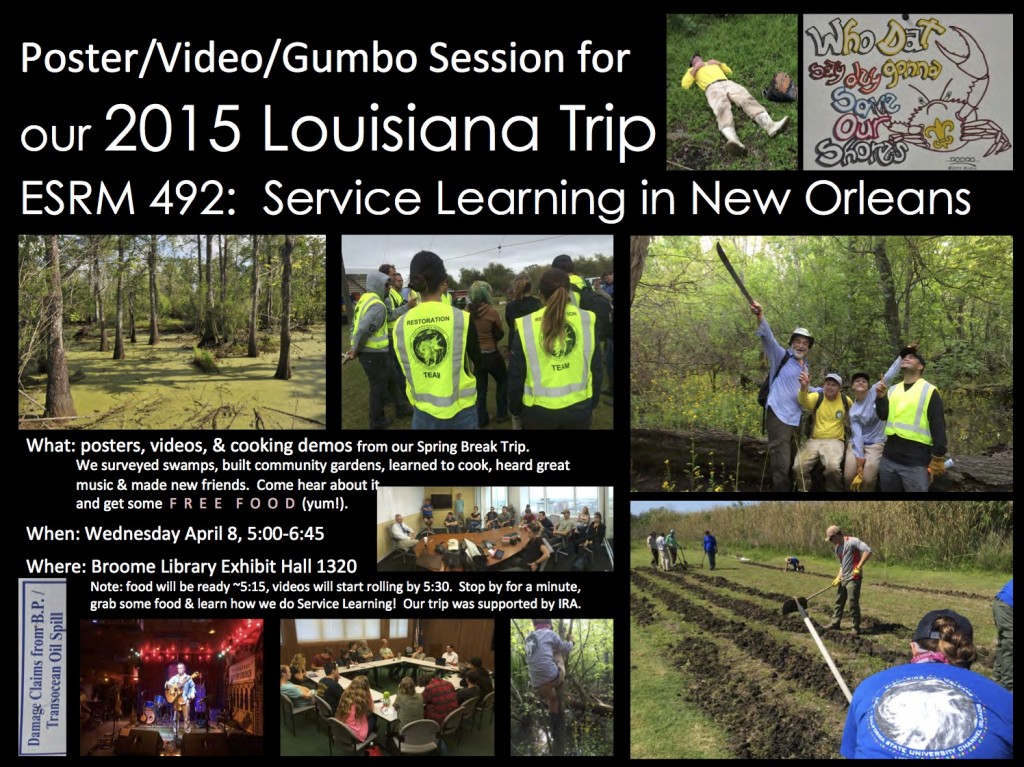Looking back
Posted from Camarillo, California, United States.
New Orleans is easily the most amazing place I have ever been and I will never forget my experience with the ESRM 492 class. I was inspired by the kind nature of the city’s residents, the phenomenal musicians, and the diverse culture that blessed New Orleans.
Exploring the French Quarter during our first days in town gave me an impression of the people native to the area. Absolutely everyone I encountered had a smile and kind words for the work the class was doing for the city. Paul Sanchez strengthened this impression with his pronounced “thank you” to our class with free CDs and a public mentioning of our hard work. I was also inspired by the care that the city’s residents had for New Orleans and what it meant to their history, culture, and family.
Everywhere the group went, it seemed that there were street musicians, artists, and other performers that livened the scene. Every club, social establishment, or venue we visited had some of the most talented musicians I have ever had the pleasure of hearing. These musicians were well versed in the music history and culture of the city and assisted in making my New Orleans trip even more unforgettable.
The liveliness of New Orleans was most evident in the parades the city seemed to have most nights we were there. There were parades for St Patrick’s day and St Joseph’s day and a small parade for every wedding that took place in the quarter. I was amazed by New Orleans’ friendliness with artists and street performers. Unlike Los Angeles, I can actually believe that a performing musician can make it comfortably in New Orleans.
The work the group did in the wetlands was grueling and labor intensive but impossibly rewarding for all of us when we thought about what the city meant to us and any body else who has ever experienced the crescent city. We were reminded of this sentiment whenever a loud soul would shout CORNBREAD at the top of their lungs to raise moral in the swamp. That food will forever be a rallying cry for the group that took this trip to the beautiful New Orleans.







